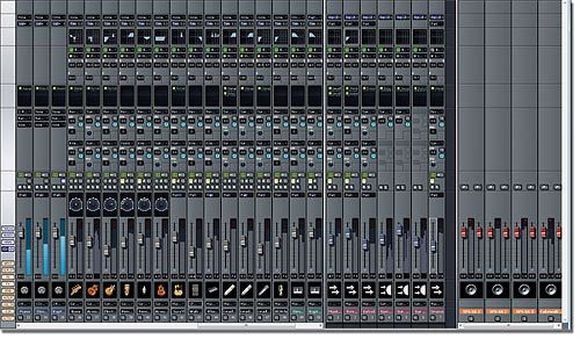6. Mixing
Early digital recording software didnt offer much in the way of mixing facilities, assuming instead that you would do this in the traditional manner via an external mixer. Today, there are few reasons to run any audio out of a computer, other than for monitoring. Your recording software will have virtual faders and knobs for every parameter, and the magic of MIDI control means you can use an external control surface with whatever knobs and faders you desire, budget allowing! Each channel will have multiple inserts and sends for effects, as well as parametric EQ and dynamics processing. The software will come bundled with a range of useful effects such as modulation, delay, compression, reverb and filtering, but will also support third-party effects via various plug-in standards. Along the lines of Photoshops Filters, you can buy (and sometimes download as shareware) additional effects that literally plug in to your software and appear alongside the built-in ones. This allows companies such as Sony/Oxford, TC Electronic, Lexicon, Waves and Focusrite to produce software versions of their hardware effects units, and gives you access to professional quality studio effects within your software. Two companies in particular, TC Electronic and Universal Audio, have produced hardware units called DSP cards to run their own software effects (see our separate Online Advisor on this topic), relieving the computer of the burden.
This is quite an important point - computers are not limitless in their power, and they can only think so hard for so long, and so the actual number of audio tracks they can record and the number of effects and software instruments that can be run will depend on the power of the system. Theres a balancing act going on, and each time you add an effect, the computer has to do more maths - each time you add an audio track, the computer has to move more data. At some point the computer will max out and playback will glitch or crackle. Remove some effects and youll be able to use more tracks, or bounce down some tracks and youll be able to use more effects. So there are limits to what can be done, although many people dont actually come up against them, and even if you do, there are many ways to work around them.

Sonar 7 Console



